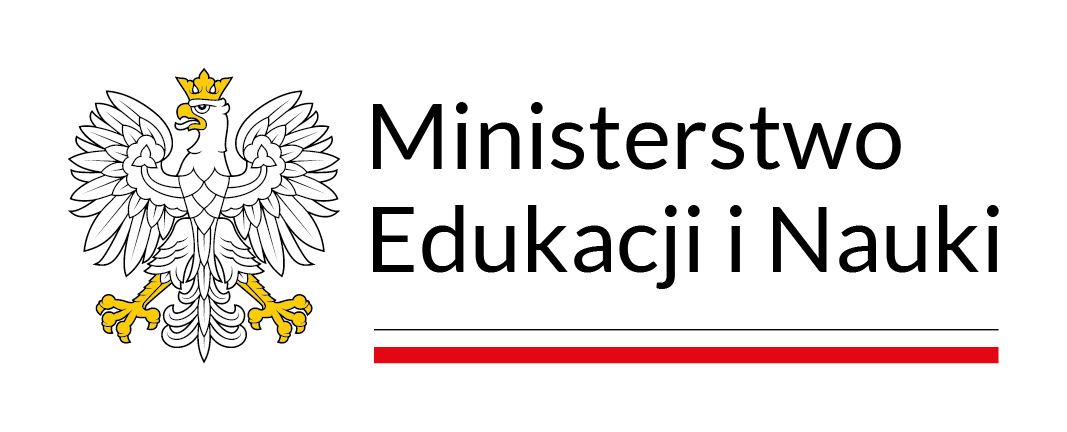Nowa rola przedmiotu w choreografiach współczesnych: Witalistyczna materialność w twórczości Aleksandry Borys
Abstrakt
Artykuł stanowi próbę poszerzenia polskiego dyskursu teatrologicznego o analizę współczesnych praktyk choreograficznych skoncentrowanych na zagadnieniu wykorzystania przedmiotu w przedstawieniach tanecznych i eksplorujących nowe sposoby rozumienia materialności. Rozważania oparte są na założeniu, że twórcy nowej choreografii postrzegają materię jako aktywny czynnik, który na różne sposoby może być włączany w proces twórczy. Autor przedstawia i interpretuje dwa projekty artystyczne Aleksandry Borys: instalację Air Mapping oraz choreografię Dancing the Dance. Prace te zestawia z teorią realizmu agencyjnego Karen Barad. Stara się wykazać, że materia w twórczości Borys może być postrzegana przez pryzmat jej procesualnego charakteru, a nie jako niezmienna podstawa rzeczywistości.
Instytucje finansujące
Słowa kluczowe:
zwrot ku rzeczom, choreografia współczesna, Aleksandra Borys, Karen Barad, realizm agencyjny, nowy materializmBibliografia
Badiou, Alain. „Taniec jako metafora myślenia”. Tłumaczenie Paweł Pieniążek. W: Nieśpiałowska-Owczarek i Słoboda, Przyjdźcie, pokażemy Wam, co robimy, 233–246.
Google Scholar
Barad, Karen. „Co jest miarą nicości? Nieskończoność, wirtualność, sprawiedliwość”. Tłumaczenie Monika Rogowska-Stangret. W: Cielemęcka i Rogowska-Stangret, Feministyczne nowe materializmy, 63–70.
Google Scholar
Barad, Karen. „Intra-Actions”. Interview by Adam Kleinman. Mousse Magazine, no. 34 (2012): 76–81.
Google Scholar
Barad, Karen. Meeting the Universe Halfway: Quantum Physics and the Entanglement of Matter and Meaning. Durham: Duke University Press, 2007. https://doi.org/10.2307/j.ctv12101zq.
DOI: https://doi.org/10.2307/j.ctv12101zq
Google Scholar
Barad, Karen. „Nature’s Queer Performativity”. Qui Parle 19, no. 2 (2011): 121–158. https://doi.org/10.5250/quiparle.19.2.0121.
DOI: https://doi.org/10.5250/quiparle.19.2.0121
Google Scholar
Barad, Karen. „On Touching—the Inhuman That Therefore I Am”. differences. A Journal of Feminist Cultural Studies 23, no. 3 (2012): 206–223. https://doi.org/10.1215/10407391-1892943.
DOI: https://doi.org/10.1215/10407391-1892943
Google Scholar
Barad, Karen. „Posthumanistyczna performatywność: Ku rozumieniu, jak materia zaczyna mieć znaczenie”. Tłumaczenie Joanna Bednarek. W: Teorie wywrotowe: Antologia przekładów, redakcja Agnieszka Gajewska, 323–360. Poznań: Wydawnictwo Poznańskie, 2012.
Google Scholar
Barad, Karen. „TransMaterialities: Trans*/Matter/Realities and Queer Political Imaginings”. GLQ: A Journal of Lesbian and Gay Studies 21, no. 2/3 (2015): 387–422. https://doi.org/10.1215/10642684-2843239.
DOI: https://doi.org/10.1215/10642684-2843239
Google Scholar
Cielątkowska, Zofia Maria. „Maurice Merleau-Ponty – ucieleśnienie wzroku, ucieleśnienie ciała”. W: Nieśpiałowska-Owczarek i Słoboda, Przyjdźcie, pokażemy Wam, co robimy, 289–300.
Google Scholar
Cielemęcka, Olga, i Monika Rogowska-Stangret, red. Feministyczne nowe materializmy: Usytuowane kartografie. Lublin: E-naukowiec, 2018. http://e-naukowiec.eu/wp-content/uploads/2018/05/ksi%C4%85%C5%BCka-wersja-ostateczna-2.pdf.
Google Scholar
Derra, Aleksandra, „Mechanika kwantowa, dyfrakcja i niedosyt filozoficzny: Nowy materializm feministyczny Karen Barad w kontekście studiów nad nauką i technologią”. W: Cielemęcka i Rogowska-Stangret, Feministyczne nowe materializmy, 129–149.
Google Scholar
Domańska, Ewa. „O zwrocie ku rzeczom we współczesnej humanistyce (Ku historii nie-antropocentrycznej)”. Roczniki Dziejów Społecznych i Gospodarczych 65 (2005): 7–23.
Google Scholar
Domańska, Ewa. „Problem rzeczy we współczesnej archeologii”. W: Rzeczy i ludzie: Humanistyka wobec materialności, redakcja Jacek Kowalewski, Wojciech Piasek i Marta Śliwa, 27–60. Olsztyn: Instytut Filozofii Uniwersytetu Warmińsko-Mazurskiego, 2008.
Google Scholar
Harman, Graham. Traktat o przedmiotach. Tłumaczenie i posłowie Marcin Rychter. Przedmowa do polskiego wydania Szymon Wróbel. Warszawa: Wydawnictwo Naukowe PWN, 2013.
Google Scholar
Królica, Anna. Pokolenie Solo: Choreografowie w rozmowach z Anna Królicą. Kraków: Cricoteka, 2013.
Google Scholar
Królica, Anna. „Taniec.pl czyli choreografia jako produkt eksportowy”. W: Sztuka do odkrycia: Szkice o polskim tańcu, 97–103. Tarnów: Mościckie Centrum Kultury, 2011.
Google Scholar
Latour, Bruno. Splatając na nowo to, co społeczne: Wprowadzenie do teorii aktora-sieci. Wstęp Krzysztof Abriszewski. Tłumaczenie Aleksandra Derra i Krzysztof Abriszewski. Kraków: Universitas, 2010.
Google Scholar
Lepecki, André. „Errancy as Work: Seven Strewn Notes for Dance Dramaturgy”. W: Dance Dramaturgy: Modes of Agency, Awareness and Engagement, eds. Pil Hansen and Darcey Callison, 51–66. Basingstoke: Palgrave Macmillan, 2015.
Google Scholar
Lepecki, André. „Moving as Thing: Choreographic Critiques of the Objects”. October, no. 140 (2012): 75–90. https://doi.org/10.1162/OCTO_a_00090.
DOI: https://doi.org/10.1162/OCTO_a_00090
Google Scholar
Leśnierowska, Joanna. „Czekając na Małysza”, Didaskalia, nr 75 (2006): 16–19.
Google Scholar
Mrozek, Witold. „Polski taniec na platformie”. W: Nowy taniec: Rewolucje ciała, redakcja Witold Mrozek, 48–54. Warszawa: Wydawnictwo Krytyki Politycznej, 2012.
Google Scholar
Nieśpiałowska-Owczarek, Sonia, i Katarzyna Słoboda, red. Przyjdźcie, pokażemy Wam, co robimy: O improwizacji tańca. Łódź: Muzeum Sztuki, 2013.
Google Scholar
Olsen, Bjørnar. W obronie rzeczy: Archeologia i ontologia przedmiotów. Tłumaczenie Bożena Shallcross. Warszawa: Instytut Badań Literackich PAN, 2013.
Google Scholar
Waligóra, Katarzyna. „Koń nie jest nowy”: O rekwizytach w teatrze. Kraków: Wydawnictwo Uniwersytetu Jagiellońskiego, 2017.
Google Scholar
Autorzy
Maciej GuzyUniwersytet Jagielloński Polska
https://orcid.org/0000-0002-3049-1782
Absolwent prawa i teatrologii na Uniwersytecie Jagiellońskim; doktorant w Szkole Doktorskiej Nauk Humanistycznych UJ; współzałożyciel oraz członek Pracowni Kuratorskiej, w której zajmuje się działalnością kuratorsko-producencką w obszarze sztuk performatywnych; autor recenzji i artykułów publikowanych w Didaskaliach. Gazecie Teatralnej, Teatraliach i The Theatre Times.
Statystyki
Abstract views: 783PDF downloads: 542 PDF downloads: 211
Licencja
Prawa autorskie (c) 2021 Maciej Guzy

Utwór dostępny jest na licencji Creative Commons Uznanie autorstwa – Użycie niekomercyjne – Bez utworów zależnych 4.0 Międzynarodowe.
Autor/ka udziela niewyłącznej i nieodpłatnej licencji (CC BY 4.0) na wykorzystanie tekstu w "Pamiętniku Teatralnym", zachowuje nieograniczone prawa autorskie, ale zobowiązuje się do podawania miejsca pierwodruku przy ponownym wykorzystaniu artykułu (umowa licencyjna do pobrania). Zgłaszając artykuł do publikacji, autor/ka wyraża zgodę na jego udostępnianie na licencji CC BY 4.0.
Od zeszytu 1/2018 do zeszytu 3/2022 artykuły publikowane były na licencji CC BY-NC-ND 4.0. W tym okresie autorzy/ki udzielali niewyłącznej i nieodpłatnej licencji (CC BY-ND 4.0) na wykorzystanie tekstu w "Pamiętniku Teatralnym", zachowywali nieograniczone prawa autorskie, ale zobowiązywali się do podawania miejsca pierwodruku przy ponownym wykorzystaniu artykułu.









